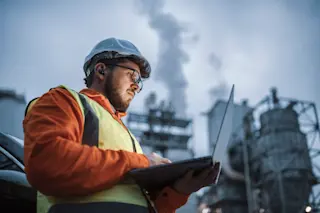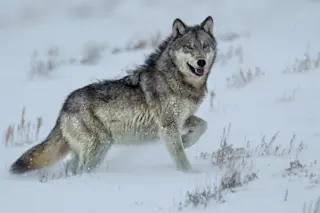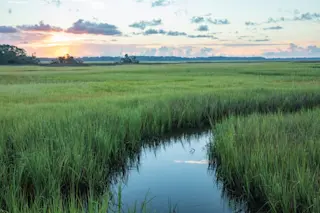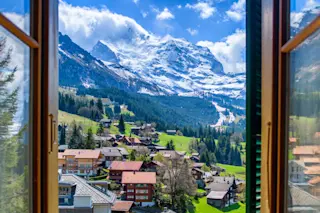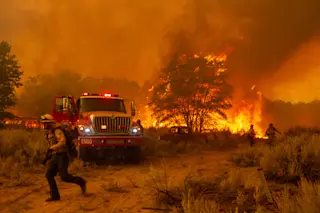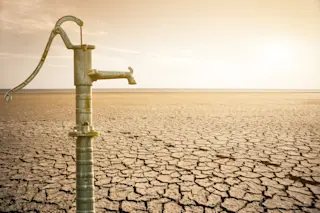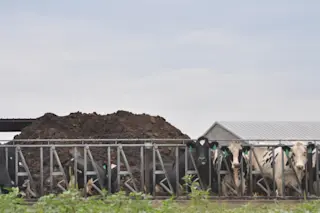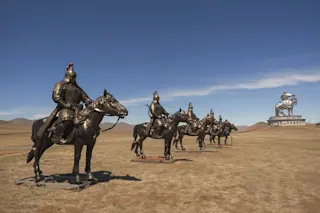In a recent post and comment elsewhere, I have suggested that better communication will not be enough to convince the masses to embrace climate change as an urgent concern. The philosopher Alain de Botton comes to the same conclusion is this elegant essay:
The role of the commentator on the environment is at one level to enable us to notice changes that are occurring. But at another level, it is also a question of getting us to care. And this is tall order, for we are being asked to worry about the possible reduction in the number of our species three generations hence, when we all have to deal with a far more imminent problem: our own death. We are being asked to worry about other people who are not yet born as much as we worry about ourselves. Never before in the history of humanity have we been asked to care so much about others of whom we know so little. Our empathetic powers have been stretched to breaking point.
The one thing that might get us over this hump, he believes, is art:
It is artists who are going to have to help us to picture "“ literally and figuratively "“ dangers which are generally invisible and are therefore constantly subsumed under the weight of our more mundane or personally intense concerns. Artists may have no solutions, but they are the ones who can come up with the words and images to make visible and important the most abstract and impersonal of challenges.
To this end, there are recent artistic efforts underway. Prodded by Alain de Botton's essay, Piper Corp at the Ecological Society of America (ESA) blog examines some of the latest climate change art. It's a mixed bag. Personally, I'm doubtful that the Carbon Counter or photographic images of climate change will do the trick. Sure, stuff like this can't hurt, but I still tend to think that some ecological tipping point will have to occur before people feel the problem in their guts. Right now climate change is an abstract issue that is processed in the part of the brain that doesn't register it as urgent danger. I realize that this fact is hard for climate advocates to wrap their own minds around. Presuming that artists will eventually play a larger role in the climate change debate, Corp's ESA post concludes with a dilemma for climate scientists:
As efforts to communicate climate science become more artistic"”as they shift from presenting the facts to imploring emotions and making a case"”where will the scientific community fit in? Sound science will always be critical to climate communication efforts, but scientists will once again have to walk a fine line between informing and advocating. Among the unprecedented challenges of climate change is its insistence that scientists engage in conversations about the subjective while maintaining scientific credibility.
Hmm, I wonder what advice Roger Pielke Jr. would offer about straddling that line? After all, Roger has made it clear that he thinks James Hansen is an admirable example of someone who has made his own climate advocacy transparent. But hasn't Hansen's scientific credibility been called into question (unfairly or not) precisely because of his open advocacy? Or is is because Hansen has engaged in subjective conversations about future scenarios, which are very much open to debate? Either way, what an excruciating "fine line" for scientists to walk, since projections of future impacts flow directly from the findings of climate science.
UPDATE: Roger Pielke Jr. responds:
"I don't think that the idea of a 'line' is the right way to think about the distinction between 'informing and advocating.' In fact, I don't think that 'informing' and 'advocating' are even mutually exclusive categories. In my book, The Honest Broker (Cambridge, 2007) I define four different ideal types for how scientists might interact with decision makers. They are: The Pure Scientist - seeks to focus only on facts and has no interaction with the decision maker. The Science Arbiter - answers specific factual questions posed by the decision maker. The Issue Advocate - seeks to reduce the scope of choice available to the decision maker. The Honest Broker of Policy Options - seeks to expand, or at least clarify, the scope of choice available to the decision maker. The scientist has to choose what role to play in specific contexts. I define a fifth category, and that is the scientist who claims to be a Science Arbiter or Pure Scientist but who is really working to reduce the scope of choice -- this is the Stealth Issue Advocate. Communication is obviously important in each context. One can be credible in any of these roles. It is when scientists present themselves as one thing and act as another that credibility is lost." RE: But hasn't Hansen's scientific credibility been called into question (unfairly or not) precisely because of his open advocacy? Roger responds: "Of course. We like our experts to be disinterested, or at least without bias and conflicts. When experts show strong biases or have conflicts, we question their credibility. That is a trade-off associated with becoming an advocate. Of course, if you want to change the world, advocacy has its own rewards. We therefore need poeple in each of the four roles outlined above."


